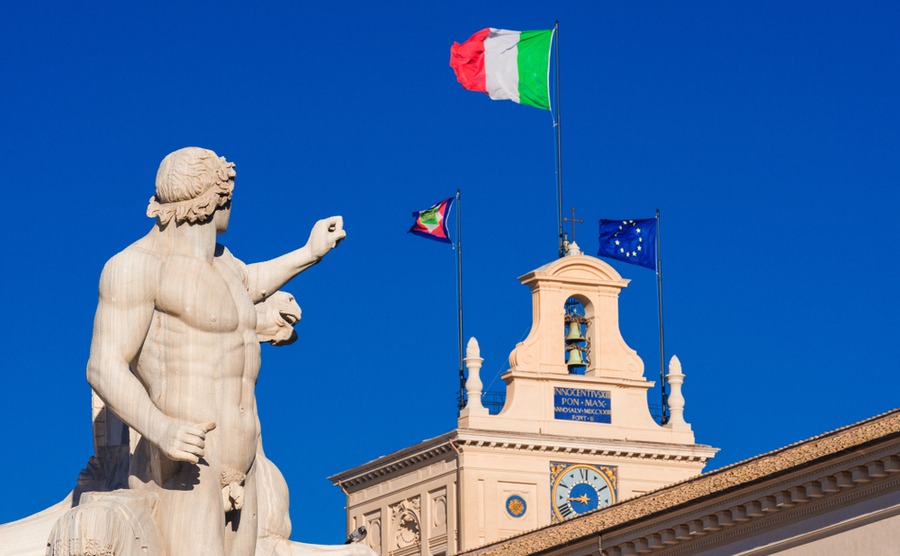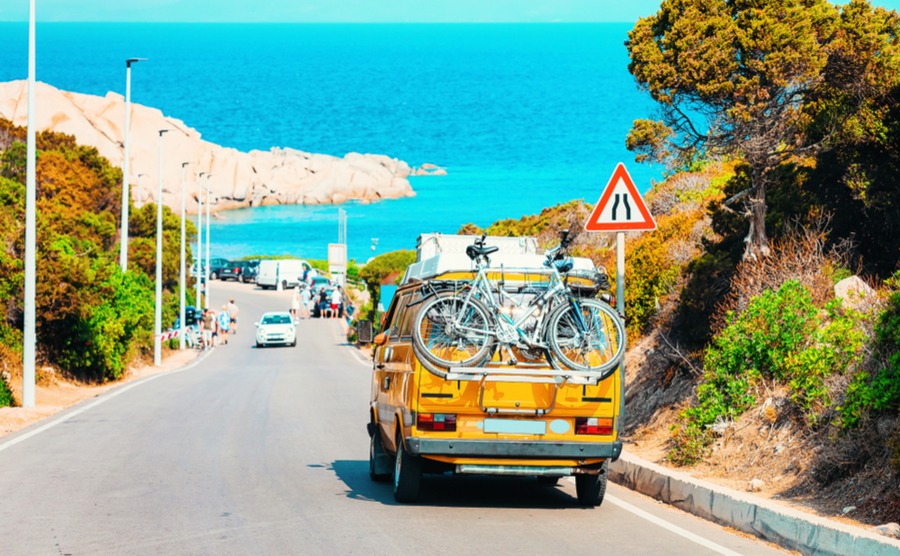With Brexit “done”, British people planning a move to Italy have until the end of the year to ensure a hassle-free move or retirement there. Here is what you need to do to be a legal resident in Italy.
During the Brexit transition period which runs up to 31st December 2020 you will still be able to arrive and settle in Italy and the rules concerning access to healthcare, social security and driving licences etc. will remain the same. For the rest of this year UK citizens officially resident in Italy retain all their EU rights other than the right to vote or stand in elections. By registering as a resident by the end of the year your rights under the Withdrawal Agreement will be protected.
The documents you need to be legally resident in Italy
Codice Fiscale
You will need to be issued with this tax number before purchasing a property in Italy. It is issued by the Agenzia delle Entrate (the Italian Revenue Agency) of the Ministry of Economy and Finance of Italy. You can find your local revenue office here. You will need to fill in a form and show your passport.
Get in touch with trusted Anglo-Italian lawyers for advice about moving to Italy and handling your residency.

You’re on your way to Italian residency
Carta d’ Identita
EU nationals who wish to live in Italy must register with the Anagrafe (Registery Office) of the municipality of residence. The easiest way to get your residency is to go in person taking with you all the documents needed to accompany the application. You will need:
1. Your passport.
2. Four passport sized photos.
3. Codice Fiscale number.
4. Proof you have sufficient funds to support yourself or proof of income.
5. A private health insurance policy valid for at least one year.
6. A copy of your house deeds.
7. The payment for the card which is €16.79 plus an admin fee. You are usually asked to purchase revenue stamps for this amount.
I recommend taking photocopies of everything and keeping copies for yourself. Your finger print will also be taken and stored on the card with all your other details.
The council will want to check that you are really living in the property. A policeman will be sent round unannounced, to check you are there. This could be at any time of day. It can be tricky if you are renovating, because they will want to see that you are living in the property that’s on the application, not in a caravan. Shortly after this you will be able to collect your Carta d’identità from the office, or it will be sent by registered post.
The card should be one of the new “Carta d’Identità Elettronica”, which is the size of a credit card. As of January 2020, almost all of the nearly 8,000 Italian municipalities are able to issue the new Italian national eID cards. These are replacing the folded card ones that you may have seen Italians showing at airport passport checks. The time the application process takes can vary greatly from town to town.
Don’t miss your free tickets for the next Your Overseas Home show to speak to lawyers, estate agents and more face-to-face about buying in Italy.
Attestazione di Soggiorno Iscrizione Anagrafica
It’s a long name for an important piece of paper! This should be issued at the same time as the carta d’identita. Many foreign residents hadn’t heard of it until fairly recently, mainly because their local “Anagrafe” didn’t know about it either.
You may find that they need some convincing that you even need one. However, both the British and Italian government are instructing expats to have an Attestazione di soggiorno iscrizione anagrafica (non permanente) if we have been resident in Italy between three months and five years,. Once resident over five years we can apply for the Attestazione di Soggiorno permanente.
It is this certificate which confirms we are legally registered as a resident in an EU country.
It is this certificate which confirms we are legally registered as a resident in an EU country. They also suggest that we carry them when travelling, so that we don’t get our passports stamped as a foreign tourist. If your local office hasn’t done one before, you could suggest they telephone a city that has. Such as Milan, which provides information on its website.
In most cases you’ll be asked to show evidence of residency in Italy and provide two €16 tax stamps (Marca da Bollo). These are on sale at some tobacconists.
What they’ll accept as evidence can vary from office to office and your personal situation. For example, if you are working, take evidence of that. They may just take a photocopy of our Carta d’Identita and your Codice Fiscale. On the certificate they will tick one of three boxes indicating either
a) That you are employed or self-employed
b) That you have the financial resources to support yourself and medical cover.
c) Enrolled in a course of study.
To check that you have been issued with the correct certificate look for the following heading: “ATTESTAZIONE DI ISCIZIONE ANAGRAFICA DI CITTADINO DELL’UNIONE EUROPEA (Ai sensi del decreto legislative del 6 febbraio 2007, n.30)”
New residency document
The Italian government has just announced a new residency document for UK nationals as evidence of your status under the Withdrawal Agreement. They have put some instructions and an example of the new residency certificate on their official website, but it will take a few months before the information filters down to the local offices and they get their heads around it. Once you have your residency sorted out, this appears to be quite a simple extra bit of paper to ask for.
Don’t spend any money on your move abroad until you’ve read The Currency Guide to Emigration, free to download.
Italian driving licence
Once you have become resident in Italy, you should exchange your UK driving licence for an Italian one. Currently this is just a simple exchange but after 31st December 2020 you might be required to take an Italian driving test in Italian. To convert a UK licence to an Italian licence, visit your nearest Ufficio Provinciale della Motorizzazione Civile or Automobile Club Italiano.

Hitting the road in Italy
The benefits of Italian residency
- You pay less purchase tax when you buy your home, as long as you agree that you will be applying for residency within 18 months. On a second home or luxury property you would be paying 9%, but if it’s to be your main residence you pay just 2% of the cadastral value of the property.
- You don’t pay the equivalent of council tax (IMU/Tasi) on your primary residence in Italy (Unless it is classed as Luxury). Think how much that is going to save you compared to what you are paying for council tax in the UK.
- As a resident living in Italy you have the possibility of enrolling in the National Health Service and benefiting from the same health care assistance provided to Italian citizens. When you register with the National Health Service, you receive a card called the “Tessera Sanitaria” (Italian Health Insurance Card). Many public healthcare services are then free or you pay a reduced fee each time your doctor refers you to a specialist at the hospital. Under the Brexit withdrawal agreement, if you register your residency in Italy before the end of 2020 and you qualify to register for healthcare with the Italian National Health Service (Servizio Sanitario Nazionale: SSN), you’ll have life-long healthcare rights in Italy, provided you remain legally resident in Italy.
- If you are a S1 holder, receiving an exportable UK State Pension or another exportable benefit, residing in Italy before 31st December 2020, your healthcare arrangements will not change, for as long as you are residing in Italy.
- Once you are resident you should inform the electric provider, Enel, who will charge you a reduced rate.
- The Identity card (Carta d’identità) is very useful, as you can show that instead of your passport when you are out and about in Italy. In situations where you are required to establish your identity, Italians breathe a sigh of relief when you produce a Carta d’identità and codice fiscale.
If you have any difficulty at all in getting any of your rights, for example, registering your residency, getting a tessera sanitaria or entering Italy, just refer the official to the website of the Presidenza del Consiglio dei Ministri.
If you are officially resident in Italy by the end of the transition period, you will be covered by the Withdrawal Agreement, and your rights will be protected for as long as you remain resident in Italy. For information on your rights under the Withdrawal Agreement consult the UK Governments guide for UK Nationals living in or moving to Italy gov.uk/livinginitaly.
You can also follow any of these pages on social media to see the latest updates and to ask advice: UKinItaly, British Citizens in Italy, British in Italy, and Her Majesty’s Ambassador in Rome, Jill Morris.










